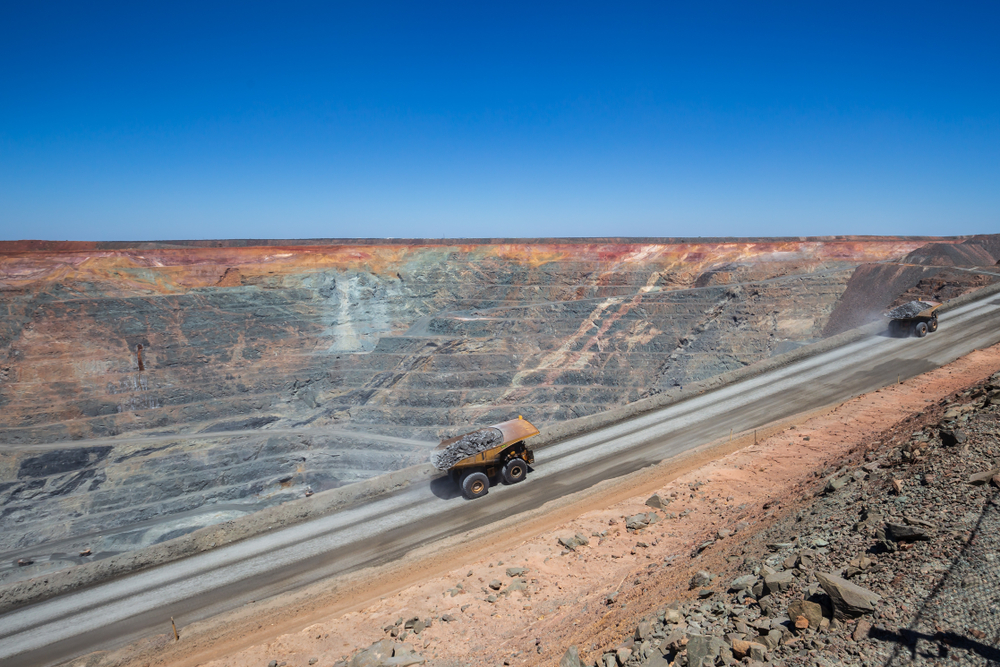Is hyper-saline water alone an effective dust suppressant?

In many hard rock mines around Australia, particularly in the Goldfields region of Western Australia and large areas of Northern Queensland and South Australia, hyper-saline water is commonly found and managed throughout sites for a variety of purposes.
Hyper-saline brine waters can be repurposed for roles such as leaching, re-circulation and even as a dust suppressant on haul roads.
Operators tend to use this hyper-saline water for dust control as it is often too cost prohibitive in remote mining regions to treat the water for other purposes requiring fresh water. There is a widespread claim that the salt content in the water is sufficient enough for use as a dust control agent on haul roads without the need for other or additional soil binding technologies.
Despite this claim, the effectiveness of using saline water as a dust suppressant very much depends on a number of factors. The first one being the type of salts dissolved in the water.
For example, hygroscopic salts can be effective in regions that are rich with atmospheric moisture, such as morning or evening dew. The salt can control dust by retaining moisture in the roadbed for extended periods of time, thus reducing the need for frequent watering of roads. The salt leaves a crust on the road surface which produces a temporary reduction in dust levels.
The results of hygroscopic salts are impacted greatly by the level of salinity in the water. The higher the salinity, the better the performance. However, most hygroscopic salts that are used for dust suppression are salts consisting of strong acids like chlorides from hydrochloric acid, sulphates from sulfuric acids and nitrates which originate from nitric acid. These compounds are not entirely effective for dust suppression purposes and are instead mainly used in fertilizers.
Moreover, in dry regions where there is minimal to no atmospheric moisture, salt does not perform in the same way as it does in moisture-rich environments. The salt instead quickly breaks down when trafficked and becomes dust itself due to the lack of moisture in the air. It also doesn’t produce a permanent bond — particularly in wet conditions.
Widespread use of hyper-saline water also introduces additional hazards and risks concerning corrosion of plant structures and vehicles. Hygroscopic salts originate from strong acids and are therefore highly corrosive to stainless steel. Using hyper-saline water also contributes to soil infertility which can complicate site environmental management considerations and mine rehabilitation projects later in the life cycle.
The alternative - using specially formulated dust control binders
As outlined above, hyper-saline water cannot be relied upon solely for effective dust control on haul roads. There are too many variables that can impact its efficacy for preventing dust and its overuse can introduce additional hazards to the environment.
Mines wanting to limit their use of hyper-saline water and improve its dust control properties should consider using reputable dust suppressant additives which have superior dust binding properties in all weather conditions year round.
Lignosulphonate based road binders, such as Dust-A-Side Australia’s HydroTac, are particularly well-suited for use in mines with hyper-saline water. This is because these types of binders are robust against saline water and are also more compatible with a wide range of wearing courses.
The binding properties of lignosulphonate can be enhanced by the addition of sugars which helps bind surface road material together and reduces wheel generated dust from the road users. Water evaporates from the lignosulfonate as it dries and the dust particles are trapped by the high-viscosity, naturally sticky material. This is particularly effective for use in areas where conditions are arid and water evaporates quickly – especially across large inland areas of Western Australia, South Australia and outback Queensland.
Hydro-Tac is a specially formulated biodegradable binder that can be used on haul roads, access roads and other exposed surfaces as a spray-on dust control treatment. Totally organic, it has no corrosive chloride compounds and is environmentally friendly and readily biodegradable.
Working as a hygroscopic binding agent, this ligno based dust control product helps mines to reduce water cart usage for dust control purposes by retaining moisture in the road surface and increasing the time period between respraying. On Australian mines HydroTac has been shown to reduce water cart operating hours by up to 60%.
Want to learn more about using HydroTac at your site?
Dust-A-Side Australia is the only supplier in the market to offer independently accredited dust control haul road management services with it’s proven product technologies.
We service clients all over Australia and understand the unique challenges posed by differing environmental factors.
We are focused on delivering the value often claimed by others but never realised, by working through a change management approach to maintaining the assets and driving unwavering focus on the application and reapplication schedules.
To request a no obligation technical consultation and dust report, simply click here.



